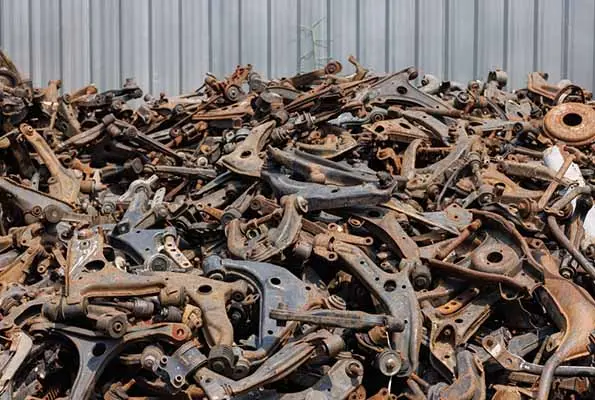Ferrous scrap is expected to show up on more national “strategic raw material” lists even if its value in the United States and elsewhere has been toward the lower end of its range, indicating plenty of supply, according to Netherlands-based ING Bank.
According to a recent analysis from the ING commodities division, ferrous scrap is quickly becoming a highly sought-after commodity as global decarbonisation efforts pick up steam. This is especially true when governments start enacting new export limits in order to reach their important net-zero goals.
Citing data from the Brussels-based Bureau of International Recycling (BIR), London-based ING Commodities Strategist Ewa Manthey’s analysis examines the present cross-border ferrous scrap trading scenario that is well-known to those who trade the secondary commodity globally.
According to Manthey, “The main buyer was Turkey, which purchased more than 10.5 million metric tons of imported ferrous scrap in 2022.”
The European Union is the world’s largest exporter of scrap.
Turkey will have a 71.5% market share in scrap-fed electric arc furnace (EAF) steelmaking by 2022, according to a worldwide map. This is significantly higher than the EU’s present share of 43.7% and the UK’s 19.1% share.
A significant amount of new EAF capacity is being built or planned in Europe and the United Kingdom.
ING believes that export limits on ferrous scrap are increasing and are likely to continue to increase, regardless of whether this is a smart move or a call for protectionism made by nearby steel companies.
According to data from the Organisation for Economic Co-operation and Development (OECD), “Africa, the Middle East, North Africa, and Asia have the most active export restrictions on ferrous scrap,” Manthey states.
She emphasises that export duties are the most prevalent kind of restriction but also points out that outright bans “are used almost as often as duties.”
The majority of these countries, she continues, tend to be scrap-deficit nations with historically low steel consumption and insufficient scrap supplies.
Like the US, the EU has long been a place to dump surplus material. However, in early 2024, a proposal to amend the Waste Shipment Regulation (WSR) was adopted by the European Parliament.
Furthermore, an additional attempt by the EU to include ferrous scrap in its Critical Raw Materials Act (CRMA) may lead to the classification of ferrous scrap as a protected substance, thus erecting an additional export obstacle.
According to Manthey, “It could become difficult to continue exporting the material, especially to buyers inside the OECD like Turkey, if ferrous scrap is added to the final list of the CRMA.”
If those changes take effect, exports of nonhazardous scrap for recycling—specifically, ferrous and nonferrous scrap—to nations outside the OECD will only be permitted if those nations ask for permission and prove they can adequately handle it, beginning in 2025.
Citing figures from the International Rebar Producers and Exporters Association (IREPAS), Manthey claims that the European Union can go from being a net exporter of scrap to an importer of scrap in just five years due to the combination of expanded EAF capacity and outbound limitations.
She continues, “Since about 25% of the EU’s exports of ferrous scrap go to non-OECD countries, such restrictions in Europe are likely to have significant consequences for the global scrap market.”
Another country where steelmakers would be unpleasantly surprised by the possibility of an EU scrap deficit is India.
According to Manthey, in order to accomplish the government’s goal of reaching 300 million metric tons of annual steel capacity, the nation intends to import roughly 30 million tons of raw steel materials (scrap, pig iron, and scrap alternatives) each year by 2030.
Manthey points to ongoing purchases by Nucor Corp. in the United States and ArcelorMittal in Europe to illustrate a pattern of steel makers acquiring scrap processing capacity by looking to Europe and the US for the rest of this decade, ING expects to see more purchase activity of this kind.
According to her, “The global demand for ferrous scrap will keep rising as a result of the growing attention being paid to the material as a crucial raw material in the low-carbon steelmaking process.”
“We anticipate that the steel industry will remain vertically integrated as steel mills strive to obtain the scrap steel needed to produce low-carbon steel, which will subsequently fuel future mergers and acquisitions,” Manthey pointed out further.
The global demand for ferrous scrap is increasing significantly as countries move towards decarbonisation and net-zero goals. Turkey is the main buyer of imported ferrous scrap, and it is expected to have a 71.5% market share in scrap-fed electric arc furnace steelmaking by 2022.
The EU, which is the world’s largest exporter of scrap, is likely to face significant consequences for the global scrap market as new export limits are imposed to meet net-zero goals. As the demand for low-carbon steelmaking processes grows, the steel industry is expected to remain vertically integrated, leading to future mergers and acquisitions.



